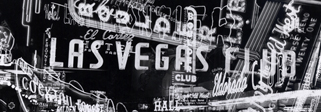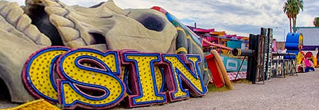Thursday, May 15, 2008 | 3 a.m.
Sun Topics
The Las Vegas Valley is seeking ways to squeeze every drop of water out of all available desert resources.
Las Vegas, despite its Spanish name meaning “The Meadows,” is seeking a delicate balance between conserving its current scarce water supply and finding new and innovative water resources.
For thousands of years artesian springs and a freshwater creek ran from the western side of the Las Vegas Valley to the area known today as the Las Vegas Wash, 15 miles east of downtown Las Vegas.
A fluted point, estimated as old as 12,000 years, discovered north of the Las Vegas Wash provides evidence of early people in the valley who hunted and eventually farmed near those springs.
After Spanish explorers, Mormon pioneers and the San Pedro, Los Angeles and Salt Lake Railroad built a way station in 1905, all demanding water, an increasing population built homes and businesses beyond the water supply within the valley.
When the 1922 Colorado River Compact defined amounts that the seven states (Arizona, California, Colorado, Nevada, New Mexico, Utah, and Wyoming) received from the river, Southern Nevada had no significant farming. Groundwater seemed plentiful and no one could predict the growth to come. So the Silver State received the lowest share.
Under the decades-old pact, California receives the largest share of Colorado River water at 4.4 million acre-feet a year. Nevada gets the smallest share at 300,000 acre-feet a year.
After the Nevada Legislature created the Las Vegas Valley Water District in 1947, it bought the assets of the private Las Vegas Land and Water Company — which served the railroad — to deliver water to the city and unincorporated Clark County.
By the mid 1950s the valley’s groundwater began to drop and nervous officials began seeking alternate water sources.
By 1960, the Water District, the industrial plant, and the city of Henderson received about 18,000 acre-feet of river water through an early industrial pipeline to try to keep up with activities at Nellis Air Force Base, requirements of the BMI industrial complex in Henderson, and Las Vegas’ continued growth.
The Colorado River Commission of Nevada and local leaders spent several years negotiating with the federal government for loans to pay for a new pipeline. Funding in late 1967 led to construction of the Southern Nevada Water System in 1968. By 1971 the first straw, or pipeline, began delivering water to the valley after Gov. Mike O’Callaghan turned a valve.
In 1982 the second stage, upgraded water treatment, was completed. But growth had surpassed earlier forecasts, leading the Water District to file 148 applications in 1989 for unused groundwater in Clark, Lincoln, Nye, and White Pine counties and a few surface water rights on the Virgin River, which runs through northern Clark County into Lake Mead.
Water seemed plentiful into the late 20th century. Thanks in large part to a sudden spring warm-up along the Colorado River in 1983, when a large quantity of snow packs melted and thus filled Lake Mead to the brim. Water poured over Hoover Dam’s spillways in July 1983. After that, the lake continued to have its ups and downs until the 21st century.
The cities in the Las Vegas Valley and Clark County began storing or “banking” water in 1987. An agreement with Arizona in 1996 expanded banking efforts across state lines. In October 2004, Southern Nevada got a provision under existing federal regulations to store unused Colorado River water in California.
The Southern Nevada Water Authority formed in 1991 as an umbrella agency to find and develop in-state and out-of-state water resources for growing Las Vegas.
In 1991 community leaders initiated major water conservation measures for the Las Vegas Valley, the first such restrictions in decades. The effort led to ordinances adopted by cities and the county restricting lawn watering during the hottest times of day.
In the mid 1990s traces of contaminants, including the rocket fuel booster ammonium perchlorate, had been discovered in Lake Mead’s waters. The Water Authority began a comprehensive water quality sampling program and took action to remove perchlorate from the supply of drinking water. Two manufacturers at the BMI industrial complex had made ammonium perchlorate since the 1950s and it had entered Lake Mead through the Las Vegas Wash.
Another expansion of the water system, including a “second straw” from the lake, allowed 480 million gallons of water a day treated and delivered by 1997 and up to 600 million gallons per day by 1999. Then drought returned to the Southwest.
From 2000 through 2007 the latest drought caused Lake Mead to drop more than 100 feet as people continued to pour into Las Vegas and its surrounding communities.
Water and weather experts had confirmed in the mid 1990s that Las Vegas had created an urban island producing more heat than the normal desert landscape. The area had warmed a degree or two and nighttime temperatures grew warmer as more concrete and asphalt covered the valley. Warmer air caused more evaporation from Lake Mead, combined with higher drinking water demand from growth.
With the ongoing drought, the West in general is receiving less rain and much smaller winter snow packs in the mountains.
The Water Authority has prepared a plan to restrict local water use and to build a third straw from Lake Mead. The proposed pipeline will draw water from deeper in the lake, ensuring a more reliable water supply.
In the past, there have been wild schemes to supply fresh drinking water to interior desert cities like Las Vegas. Ideas ranging from desalinating the Pacific Ocean, to delivering water by floating giant rubber bags filled with melting ice from Arctic glaciers. But the plans have been either too expensive or too outrageous.
Some climate scientists, such as Stephen Chu, a Nobel laureate and director of the Lawrence Berkeley National Laboratory, and Brad Udall, director of the National Oceanic and Atmospheric Administration’s Western Water Assessment in Boulder, Colo., say that the Colorado River Basin will not fully recover from the current drought if global warming and growth in the West continue.
Climate experts also say that the region, like Southern Nevada, will have to buy Native American, farmers’ and ranchers’ water rights to meet the ever-increasing demands of southwestern cities. However, that could lead to lengthy court battles between rural and urban areas and perhaps even more restrictions or limited growth plans.


 Explore Las Vegas’ past and present
Explore Las Vegas’ past and present Boomtown: The Story Behind Sin City
Boomtown: The Story Behind Sin City Neon Boneyard: A 360° look
Neon Boneyard: A 360° look Mob Ties: See the connections
Mob Ties: See the connections Implosions: Classic casinos crumble
Implosions: Classic casinos crumble